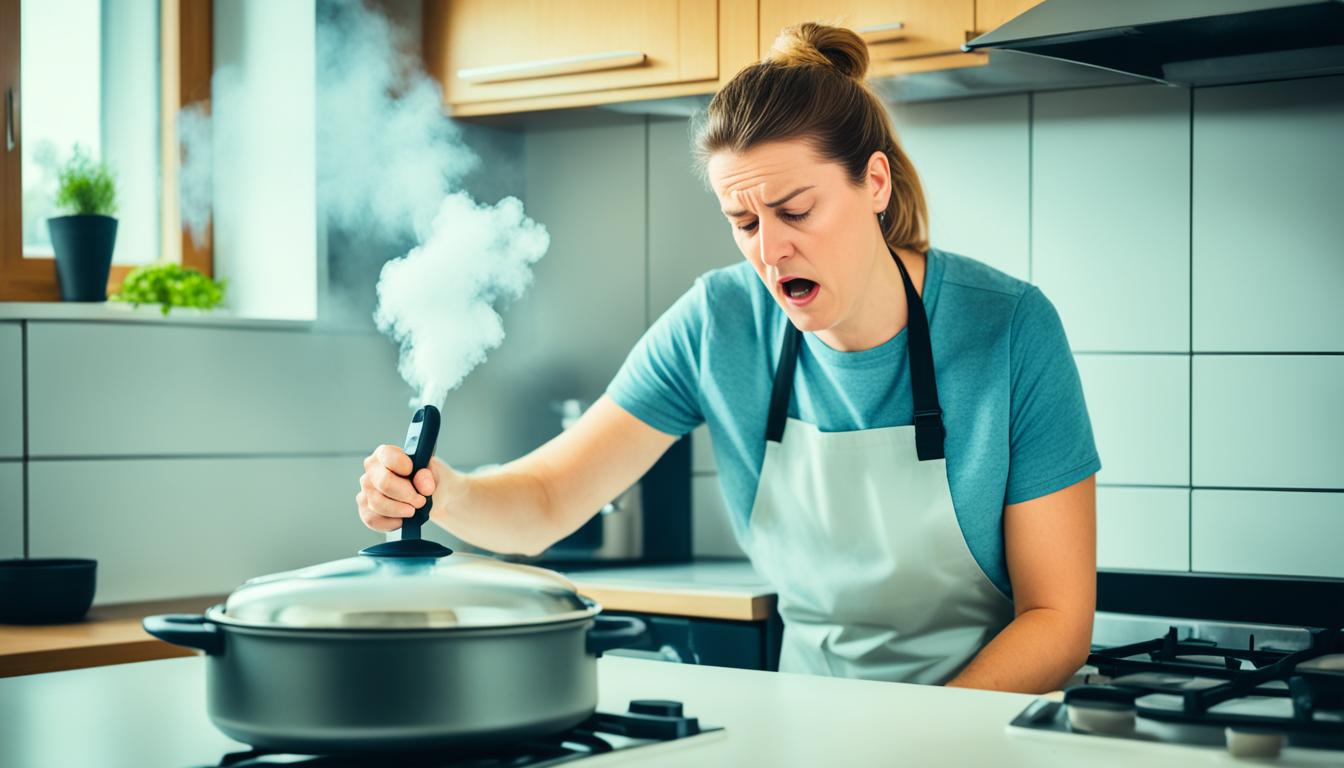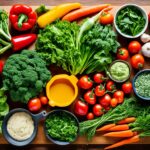Have you ever found yourself frustrated when attempting to follow a recipe that promises quick and easy results, only to discover that it takes much longer than expected? You’re not alone. Many home cooks experience this cooking time frustration, leaving them questioning why recipes always seem to take longer to make. Is there a hidden secret to fast and efficient cooking that we’re missing out on? Let’s explore the common reasons behind this phenomenon and discover how to master kitchen time management.
Contents
- 1 Misleading Prep Time Estimates
- 2 Variability in Cooking Times
- 3 Recipe Testing and Timing Errors
- 4 Limited Control over Cooking Variables
- 5 Recipe Writing for Marketing Purposes
- 6 Historical Perspective on Recipe Timing
- 7 Unrealistic Expectations and Culinary Realities
- 8 Redefining Cooking Time Success
- 9 Conclusion
- 10 FAQ
- 10.1 Why do recipes always take longer to make?
- 10.2 Why do recipes often have inaccurate prep time estimates?
- 10.3 What causes variability in cooking times?
- 10.4 Are recipe testing and timing errors to blame for longer cooking times?
- 10.5 What factors contribute to limited control over cooking variables?
- 10.6 Why do recipe writers exaggerate claims of quick cooking times?
- 10.7 Has recipe timing evolved over time?
- 10.8 Why do unrealistic expectations clash with culinary realities?
- 10.9 How can cooking time success be redefined?
- 10.10 How can recipe efficiency and kitchen time management be improved?
- 11 Source Links
Key Takeaways:
- Misleading prep time estimates can make recipes appear quicker than they actually are.
- Variability in cooking times due to factors like oven temperature and personal preferences can lead to extended durations.
- Recipe testing and timing errors can contribute to discrepancies between expected and actual cooking times.
- Uncontrollable cooking variables in home kitchens can result in longer-than-anticipated durations.
- Recipe writing for marketing purposes often exaggerates the speed of cooking.
Misleading Prep Time Estimates
One reason recipes often take longer than expected is that the prep time estimates can be misleading. Many online recipes are written with the intention of attracting readers looking for quick meals, so they may underestimate the amount of time it takes to chop ingredients or perform other prep tasks. This can lead to frustration for cooks who are expecting to finish the recipe quickly.
When browsing through recipes online, it’s easy to get enticed by promises of a fast and easy meal. However, it’s essential to approach these prep time estimates with a level of skepticism. While some recipes may genuinely deliver on their quick cooking times, many can leave you spending more time in the kitchen than you originally anticipated.
Unrealistically low prep time estimates can be a result of recipe writers trying to appeal to time-starved audiences who are seeking convenience and efficiency. By making claims of fast food preparation, these recipes attract attention and generate clicks, but they may not accurately reflect the reality of the cooking process.
Preparing ingredients can be a time-consuming task that should not be underestimated. Chopping vegetables, marinating meat, or measuring out spices and seasonings all require attention and precision. Rushing through these steps can lead to mistakes or compromised flavor in the final dish.
It’s important to approach prep time estimates as guidelines rather than hard and fast rules. Take into consideration your own cooking skill level, the tools and equipment available to you, and the complexity of the recipe itself. Give yourself ample time to complete the necessary prep work and don’t be discouraged if it takes longer than the estimated time provided.
Remember, cooking is a journey, and sometimes taking the scenic route can lead to delicious results. Embrace the process and enjoy every step of creating a home-cooked meal.
Variability in Cooking Times
When it comes to cooking, one of the factors that often leads to recipes taking longer than anticipated is the inherent variability in cooking times. Let’s explore the reasons behind this and why it can be frustrating for home cooks seeking efficiency in the kitchen.
Different factors, such as oven temperature, burner strength, and stove heat, can significantly impact the cooking time of a recipe. Each cook’s kitchen appliances may have their own quirks and nuances, resulting in variations that can affect the overall cooking process. Some ovens may heat up slower or have inconsistent temperature distribution, while burners may have different levels of heat output. These variables can make it challenging to achieve consistent cooking times across different households.
Moreover, individual preferences for doneness can further contribute to the lengthening of cooking times. As cooks adjust temperatures or add extra time to ensure their desired level of doneness, the overall duration of the recipe inevitably increases.
“The slow cooking process and the need to accommodate different equipment and personal preferences for doneness can create inconsistent cooking times.”
It’s important to keep in mind that the cooking process is not always a linear and predictable journey. Factors beyond a cook’s control can impact the time it takes to achieve the desired results.
Finding Consistency in an Inconsistent Culinary World
Despite the inherent variability in cooking times, there are ways to navigate this challenge and optimize the timing of your recipes:
- Invest in a reliable oven thermometer to ensure accurate temperature readings and adjust accordingly.
- Get to know your kitchen appliances better by experimenting and observing how they perform under different settings.
- Regularly calibrate your oven to maintain its accuracy and improve overall cooking consistency.
- Use visual cues and touch to gauge the doneness of food, in addition to relying solely on recipe instructions.
- Keep a cooking journal to record and track your observations, enabling you to develop a better understanding of the cooking times that work best for you.
By embracing the variability in cooking times and adopting strategies to manage it, home cooks can overcome the frustrations of inconsistent durations and achieve consistent and delicious results in their culinary endeavors.
Recipe Testing and Timing Errors
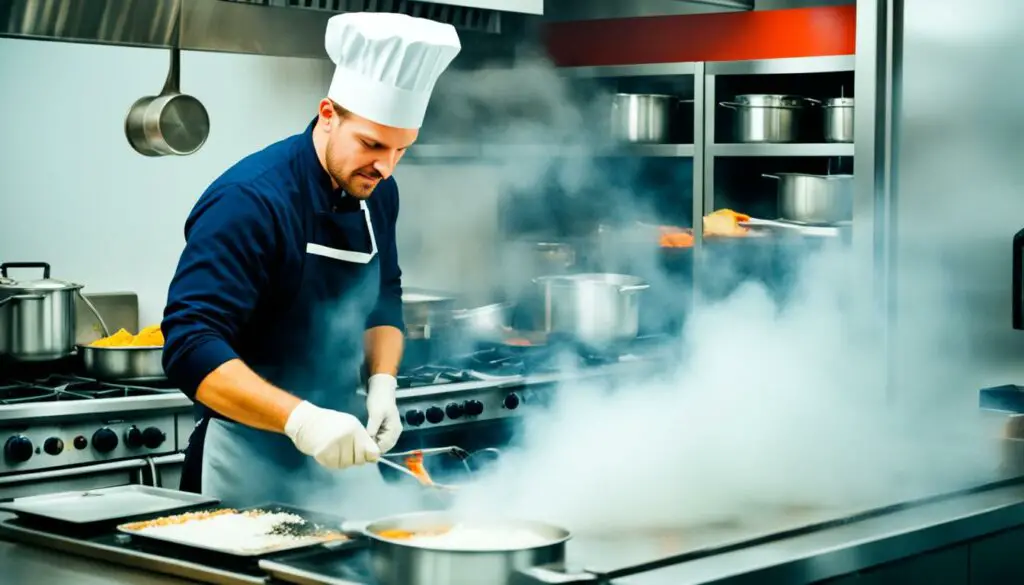
Accurate cooking times are crucial for successful recipe execution. Recipe developers and cookbook authors go through meticulous recipe testing to ensure that the estimated cooking times are reliable. However, even with extensive testing, timing errors can occur. These errors are mainly a result of variations in equipment, personal cooking techniques, and the use of professional-grade kitchens during recipe development.
During recipe testing, chefs and home cooks follow the instructions rigorously to determine the time required for each step. However, it’s important to note that the cooking times they provide may not always align with the average home cook’s experience. Factors such as skill level, familiarity with the recipe, and kitchen equipment can significantly impact the actual cooking times.
Errors in timing calculations can lead to discrepancies between the expected and actual cooking times. For example, a recipe developer may be using a high-powered stove or a preheated oven, which can accelerate cooking times compared to a regular home kitchen. The recipe’s timing may be accurate for them but inaccurate for the average home cook.
“Accurate recipe timing is often a challenge due to the wide variety of kitchen setups and individual cooking techniques. While a recipe’s estimated cooking time may serve as a helpful guideline, it’s important to rely on your own judgment and experience to determine when a dish is truly done.”
To address timing errors, some recipe developers add a disclaimer suggesting that cooking times may vary based on individual factors. However, this does not eliminate the frustration that can arise when a recipe takes longer than expected. Home cooks can mitigate timing errors by being prepared for potential variations. This includes allowing additional time in their schedule, using their judgment to determine doneness, and making adjustments based on their own kitchen setup and equipment.
Factors Contributing to Timing Errors:
Here are some common factors that can contribute to timing errors in recipes:
- Variations in equipment: Different ovens, stovetops, and other cooking appliances can have varying heat distribution and power levels, which can affect cooking times.
- Cooking techniques: Each cook has their unique cooking style and preferences for doneness, which may require adjustments to the recommended cooking times.
- Kitchen setup: Factors such as workspace and organization can impact efficiency and potentially extend the overall prep and cooking time.
- Ingredients: The freshness and quality of ingredients, as well as variations in their sizes and textures, can affect cooking times.
Understanding these potential timing errors can help home cooks manage their expectations and adapt recipes to suit their specific circumstances. By being flexible and open to adjustments, home cooks can ensure delicious and well-cooked meals without the frustration of inaccurate cooking times.
| Issue | Explanation | Solution |
|---|---|---|
| Varied equipment | Different appliances can have varying heat distribution and power levels. | Adjust cooking times based on personal equipment’s nuances and perform regular temperature checks. |
| Individual cooking techniques | Everyone has different preferences for doneness, resulting in variations in cooking times. | Use personal judgment to determine when a dish is done rather than relying solely on the recipe’s suggested time. |
| Kitchen setup | The workspace and organization within a kitchen can impact efficiency and potentially extend cooking times. | Ensure a well-organized and accessible kitchen setup to minimize prep and cooking time. |
| Ingredient variations | The freshness, quality, and size of ingredients can affect cooking times. | Monitor cooking progress closely and adjust timing based on the actual state of the ingredients. |
By recognizing the potential for timing errors and understanding the factors that contribute to them, home cooks can approach recipes with a realistic mindset and adapt as necessary. Ultimately, recipe testing helps build a foundation for accurate cooking times, but it is important to remember that individual variations in equipment, techniques, and ingredients can still result in deviations from the expected cooking times.
Limited Control over Cooking Variables
When it comes to cooking, there are numerous variables that recipe writers simply cannot control. Factors such as counter space, oven heat, and burner strength can significantly impact cooking times, leading to inconsistent results and longer-than-expected durations.
While recipe writers may provide general guidelines, it ultimately falls upon the cook to make adjustments based on their own kitchen setup and equipment. This means that even if you follow a recipe to the letter, you may still experience variations in cooking times due to these uncontrollable factors.
For example, if your oven runs hotter than average, a recipe that calls for a 20-minute cooking time may require less time in your kitchen. Conversely, if your burner is weaker, it may take longer for liquids to come to a boil.
It’s important to note that these uncontrollable factors not only affect the cooking time but can also impact the overall outcome of the dish. A slight variation in oven heat can result in a cake that is undercooked in the center or cookies that are too crispy on the edges.
Despite the challenges posed by these cooking variables, there are steps you can take to navigate them successfully. Understanding your own kitchen’s quirks, experimenting with different temperatures and cooking times, and using visual cues to determine doneness can all help you achieve more consistent results.
“Cooking is all about finding what works for you in your specific kitchen. Don’t be afraid to adapt recipes to fit your circumstances and make adjustments as needed.”
In the next section, we will explore another aspect that can contribute to inconsistent results and extended cooking times: recipe testing and timing errors. Stay tuned!
Recipe Writing for Marketing Purposes

The demand for quick and easy recipes has given rise to recipe writing that is heavily influenced by marketing strategies. In an effort to attract readers, cookbooks and websites often emphasize speed and convenience, leading to recipes with exaggerated claims of rapid cooking times. While these recipes may seem enticing, it’s essential to remember that their stated durations are often achievable only in ideal conditions.
In reality, most home cooks find that these recipes take longer to make. Factors such as differing skill levels, equipment limitations, and the need for additional prep time can all contribute to prolonged recipe durations. It’s important to approach these quick recipe claims with a critical eye, setting realistic expectations for your own cooking experience.
Challenges of Recipe Marketing
“Achieve dinner in 10 minutes!”
“Whip up a gourmet meal in a flash!”
Recipes marketed as quick and easy often rely on attention-grabbing headlines and exaggerated claims to attract time-strapped individuals looking for efficient meal solutions. While it’s true that some recipes can be prepared relatively quickly, it’s essential to approach these claims with a level of skepticism. The reality is that unless you possess highly advanced culinary skills or have a team of sous chefs at your disposal, achieving these exaggerated claims may be challenging.
Excessive reliance on quick recipes with unrealistic time expectations can lead to disappointment and frustration in the kitchen. Instead, it’s important to choose recipes that align with your skill level, available time, and equipment. By setting more realistic expectations, you’ll be able to enjoy the cooking process and create delicious meals without unnecessary stress.
Emphasizing Realistic Cooking Times
When searching for recipes, consider focusing on those with estimated cooking times that align with your skill level and kitchen setup. Look for recipes from reputable sources that offer realistic insights into the time required for each step. This can help you manage your expectations and plan your cooking time accordingly.
It’s also helpful to read comments or reviews from other home cooks who have tried the recipe. Their experiences can provide valuable insights and help you determine if the stated cooking times are accurate or inflated. By curating a collection of tried-and-tested recipes, you’ll have a better understanding of which ones are likely to fit within your desired timeframe.
| Recipe Marketing Strategies | Realistic Cooking Times |
|---|---|
| Exaggerated claims of speed and convenience | Informed estimations based on average home cooking conditions |
| Appealing to time-starved individuals | Accounting for individual skill level and available time |
| Emphasis on rapid results | Achievable benchmarks for efficient cooking |
By acknowledging the realities of cooking in a home kitchen and prioritizing achievable benchmarks, you can avoid frustration and enjoy the process of creating meals that suit your lifestyle.
Historical Perspective on Recipe Timing
Traditional recipes have a rich history and often reflect a different approach to cooking. Unlike modern recipes that provide explicit timing instructions, traditional recipe books assumed a certain level of culinary skill and did not emphasize specific cooking durations. This approach allowed for more flexibility in the kitchen, with experienced cooks relying on their senses and instincts to determine doneness.
However, as convenience cooking and the demand for quick and easy meals gained popularity, modern recipe books began to provide more precise timing estimates. This shift aimed to assist novice cooks and offer a standardized approach to cooking. While these explicit timing instructions have their benefits, they have also contributed to confusion and unrealistic expectations for home cooks.
Longer Cooking Times in Traditional Recipes
In the era of traditional recipes, longer cooking times were not stigmatized or seen as inconvenient. In fact, slow cooking processes were celebrated for their ability to develop rich flavors and tenderize tough cuts of meat. Traditional recipes often required simmering, braising, or baking for extended periods to achieve the desired results. These longer cooking times were considered the norm and were integral to creating authentic and flavorful dishes.
In traditional recipes, longer cooking times were a reflection of patience, culinary mastery, and a deep appreciation for the transformation that occurs when ingredients are allowed to meld together over time.
Respecting Historical Norms in Modern Cooking
While modern recipes have shifted towards efficiency and convenience, there is value in respecting the historical norms of traditional cooking. Understanding that some recipes require longer cooking times allows us to appreciate the artistry and flavors that come from slow and deliberate cooking. By acknowledging the historical context behind traditional recipes, we can find a balance that meets both our time constraints and our desire for authentic and satisfying meals.
By embracing traditional cooking techniques and taking inspiration from historical recipes, home cooks can elevate their culinary experiences. Whether it’s simmering a hearty stew for hours or allowing a bread dough to rise overnight, longer cooking times can bring us closer to the traditions and flavors of the past.
The Importance of Adaptation
It’s important to remember that while honoring historical norms, adaptation is also key. Today’s time-starved society may not always allow for extended cooking times. In such cases, home cooks can explore alternative methods, such as utilizing slow cookers or pressure cookers, to achieve similar results in a shorter period.
Ultimately, understanding the historical perspective on recipe timing gives us a broader perspective on what is considered “normal” in the culinary world. It encourages us to experiment, appreciate tradition, and find a balance that suits our individual needs and preferences.
Unrealistic Expectations and Culinary Realities
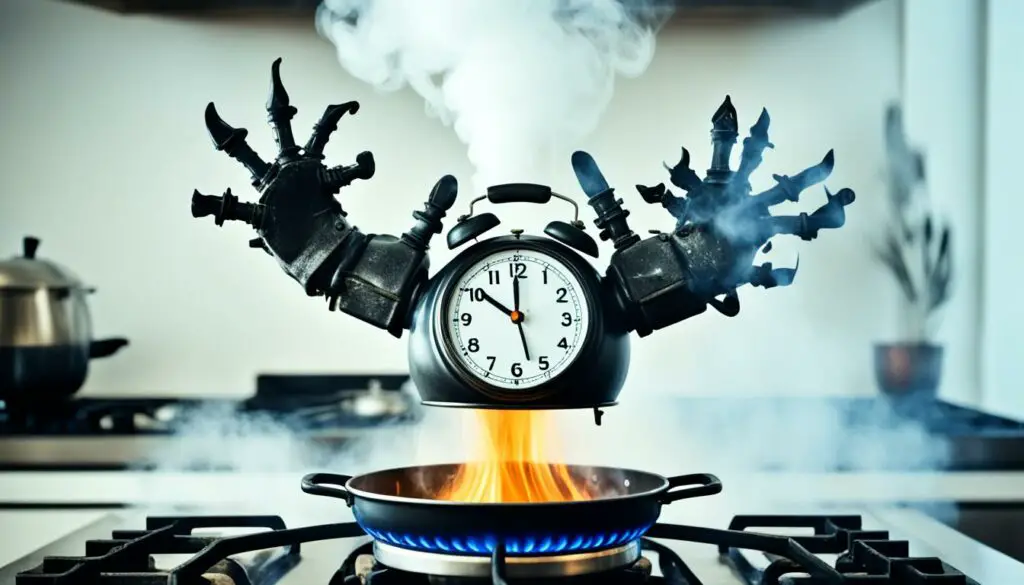
Many home cooks have unrealistic expectations when it comes to cooking times. In a time-starved society, the desire for quick and convenient meals clashes with the realities of culinary labor. Inexperienced cooks may lack the necessary skills and resources to complete recipes within the estimated time frame, leading to frustration and disappointment.
“I always thought I could recreate those fancy restaurant meals in under 30 minutes, but it turns out I was living in a fantasy world,” says Sarah, a busy working mother. “Between prepping ingredients, managing different cooking techniques, and multitasking, it takes a lot longer than I anticipated.”
Unrealistic cooking standards set by fast-paced cooking shows and social media influencers perpetuate the notion that gourmet meals can be effortlessly whipped up in minutes. However, these portrayals often fail to capture the true complexities and time-consuming nature of cooking.
Inaccurate assumptions about the availability of ingredients and kitchen equipment can also contribute to unrealistic expectations. Many recipes assume that home cooks have a fully stocked pantry and the latest kitchen gadgets. However, in reality, most people have limited ingredients on hand and may not have access to specialized tools, resulting in additional time spent on sourcing and substituting ingredients.
Recipe Timing Reinvented
To overcome unrealistic cooking expectations, it’s important to shift the focus from speed to efficiency and enjoyment. Here are some strategies to help home cooks navigate the challenges of time in the kitchen:
- Plan ahead: Take the time to read through a recipe thoroughly before starting to ensure you have all the required ingredients and equipment. This prevents last-minute scrambles and reduces the probability of surprises that can prolong cooking times.
- Break it down: Instead of attempting to complete a dish from start to finish, break the recipe into manageable tasks. Prepping ingredients in advance, such as chopping vegetables or marinating meat, can significantly reduce the cooking duration.
- Build a repertoire: Familiarize yourself with a handful of go-to recipes that you can master. This not only increases efficiency as you become more familiar with the process but also saves time in meal planning and ingredient procurement.
- Make it your own: Don’t be afraid to adapt recipes to suit your personal preferences and available resources. Experiment with ingredient substitutions, simplify complex techniques, or use convenience products to streamline the cooking process.
By setting more realistic expectations and embracing efficient cooking practices, home cooks can navigate the culinary realities of time-starved lives while still enjoying delicious meals.
Redefining Cooking Time Success
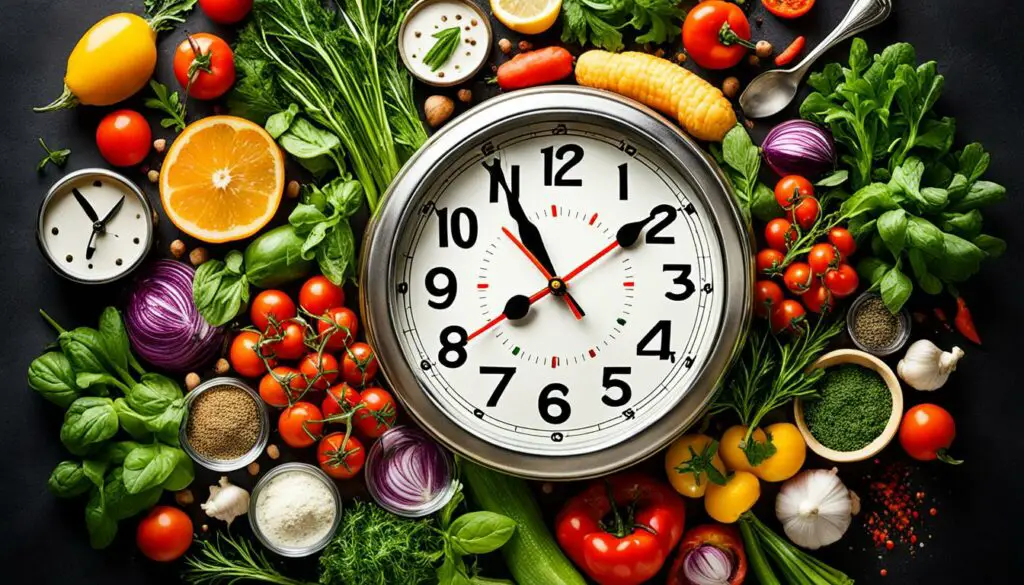
When it comes to cooking, it’s important to set achievable benchmarks and embrace realistic cooking times. Instead of striving to meet unrealistic expectations, redefining success can lead to a more enjoyable and stress-free cooking experience.
One way to alleviate the pressure to cook quickly is by doubling the estimated cooking time. Recipes often underestimate how long it takes to prepare and cook a dish, leading to frustration and rushed cooking. By allowing yourself more time, you can relax and focus on creating a delicious meal without feeling rushed or stressed.
Another strategy is to triple recipes for leftovers. Cooking larger portions not only saves time in the long run but also provides you with ready-made meals for future days. This way, you can spend less time in the kitchen while still enjoying homemade meals throughout the week.
Embracing the use of convenience ingredients can also help redefine cooking time success. Incorporating pre-packaged items such as pre-cut vegetables, canned beans, or frozen fruits can significantly cut down on preparation time. While some may argue that using convenience ingredients compromises the quality of the dish, it’s important to prioritize food pleasure and enjoyment over solely focusing on speed. After all, there’s no shame in taking advantage of the wide variety of convenient options available.
Benefits of Redefining Success
By redefining cooking time success and adopting these strategies, you can experience several benefits. Firstly, it relieves the pressure to cook quickly, allowing you to enjoy the process rather than feeling rushed or overwhelmed. Secondly, it enables you to focus on the quality of the meal, resulting in more flavorful and satisfying dishes. Lastly, it promotes a healthier approach to cooking by reducing stress and allowing you to make conscious choices about the ingredients you use.
“Redefining cooking time success is about shifting your mindset and prioritizing enjoyment and satisfaction over speed. It’s about valuing the process of cooking and savoring each step rather than racing to the finish line.” – Chef Amanda Thompson
Remember, cooking is not just about achieving a certain time limit or benchmark. It’s a creative and nourishing process that should be enjoyed. By redefining success and embracing realistic cooking times, you can transform your cooking experience into a more fulfilling and satisfying endeavor.
Conclusion
While it can be frustrating when recipes take longer than anticipated, understanding the factors that contribute to extended cooking times can help home cooks better manage their expectations and improve efficiency in the kitchen. By redefining success and embracing realistic benchmarks, it is possible to navigate the challenges of recipe timing and master kitchen time management.
Achieving recipe efficiency starts with recognizing that kitchen time management requires flexibility. Factors such as prep time, cooking variability, and uncontrollable variables can all contribute to prolonged recipe durations. By allowing for extra time during prep and acknowledging that cooking times may vary, cooks can reduce frustration and stress.
Additionally, it is important to redefine success in the kitchen. By prioritizing enjoyment and focusing on the overall food experience rather than solely on speed, home cooks can alleviate unnecessary pressure. Doubling the estimated cooking time, preparing larger portions for leftovers, and incorporating convenience ingredients can all help create more achievable benchmarks and foster a positive cooking environment.
To truly master kitchen time management, it is essential to approach cooking with a realistic mindset. Understanding that recipes may always take longer than anticipated and adapting accordingly sets the foundation for success. By embracing the joys of the cooking process and prioritizing efficient use of time, home cooks can create delicious meals while finding balance in their busy lives.
FAQ
Why do recipes always take longer to make?
There are several reasons why recipes may take longer than expected. Factors such as misleading prep time estimates, variability in cooking times, recipe testing and timing errors, limited control over cooking variables, recipe writing for marketing purposes, historical perspectives on recipe timing, unrealistic expectations, and the need to redefine cooking time success all contribute to prolonged recipe durations.
Why do recipes often have inaccurate prep time estimates?
Many online recipes underestimate the time it takes to chop ingredients or perform other prep tasks in order to attract readers looking for quick meals. This can lead to frustration for cooks who are expecting to finish the recipe quickly.
What causes variability in cooking times?
Factors such as oven temperature, burner strength, stove heat, and individual preferences for doneness can all impact the cooking time of a recipe, resulting in inconsistent cooking times.
Are recipe testing and timing errors to blame for longer cooking times?
While recipe testing plays a crucial role in determining accurate cooking times, even well-tested recipes can have timing errors. Cookbook authors and recipe developers estimate cooking times based on their own experience, which may not always align with the average home cook’s experience.
What factors contribute to limited control over cooking variables?
In a home kitchen, factors such as counter space, oven heat, and burner strength can significantly impact cooking times. Recipe writers may provide general guidelines, but it is ultimately up to the cook to make adjustments based on their own kitchen setup and equipment.
Why do recipe writers exaggerate claims of quick cooking times?
The need for quick and easy recipes has led to the rise of marketing-driven recipe writing. Cookbooks and websites often emphasize speed and convenience to attract readers, resulting in exaggerated claims of rapid cooking times that may not align with the average home cook’s experience.
Has recipe timing evolved over time?
Traditional recipe books did not provide specific timing instructions and assumed a certain level of culinary skill. With the rise of convenience cooking, modern recipe books have become more explicit in their timing estimates. However, this shift has led to confusion and unrealistic expectations for home cooks.
Why do unrealistic expectations clash with culinary realities?
In a time-starved society, the desire for quick and convenient meals clashes with the realities of culinary labor. Inexperienced home cooks may lack the necessary skills and resources to complete recipes within the estimated time frame.
How can cooking time success be redefined?
It is important to set more realistic benchmarks for cooking time success. Doubling the estimated time, tripling recipes for leftovers, and embracing the use of convenience ingredients can all help alleviate the pressure to cook quickly. Prioritizing food pleasure and enjoyment, rather than solely focusing on speed, is key.
How can recipe efficiency and kitchen time management be improved?
Understanding the factors that contribute to extended cooking times can help manage expectations and improve efficiency in the kitchen. By redefining success, embracing realistic benchmarks, and prioritizing enjoyment, home cooks can navigate the challenges of recipe timing and master kitchen time management.

